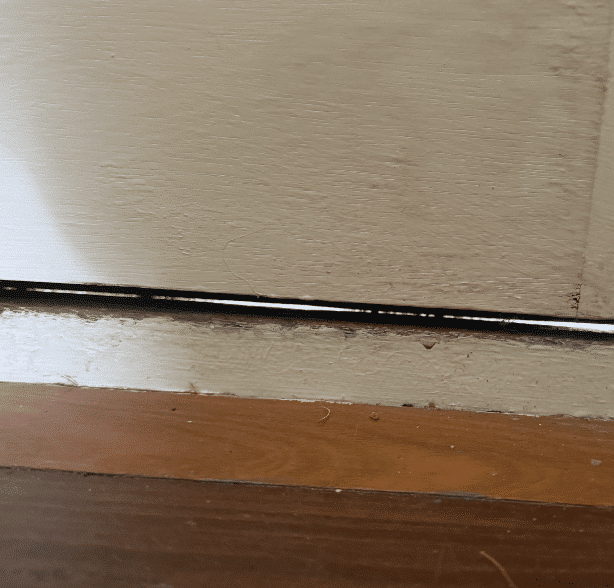When you hear the word airtight, you might imagine a sealed plastic container or a space suit — something designed to keep every breath of air inside. But in building science, airtightness doesn’t mean cutting your home off from fresh air. In fact, done right, it’s the opposite: airtightness creates a controlled, comfortable, and healthy indoor environment.
In this post, we’ll unpack what airtightness really is, why it’s important for both energy efficiency and health, and how it fits into modern high-performance building.
What Is Airtightness?
Airtightness describes how well a building envelope — the walls, roof, floors, windows, and doors — resists uncontrolled airflow between indoors and outdoors.
Every gap, crack, or poorly sealed joint in your home is a potential pathway for air leakage. These can occur:
Around window and door frames
Through service penetrations (pipes, cables, ductwork)
Between building materials that aren’t well sealed
Through roof junctions and wall connections
Airtightness is usually measured using a blower door test, which pressurises or depressurises the home and measures how many times the air inside is replaced per hour at a standard pressure difference (ACH@50Pa). A lower number means less unwanted air leakage.
Why Airtightness Matters?
1. Energy Efficiency
Leaky homes lose heated or cooled air far faster than you might expect. In winter, warm air escapes and cold air creeps in; in summer, your cooled air leaks out and hot air enters. Your heating and cooling systems have to work harder, using more energy and costing you more in bills.
In Australia, it’s not uncommon for older, draughty homes to have ACH values of 15–20 or more. By contrast, a well-built modern home can achieve 5 ACH or lower, and a Passive House standard home achieves 0.6 ACH or less.
2. Indoor Air Quality and Health
An airtight home lets you control how fresh air enters — usually through a Mechanical Ventilation with Heat Recovery (MVHR) system or other planned ventilation strategy. This ensures:
Consistent fresh air supply
Removal of indoor pollutants, allergens, and moisture
Reduced risk of mould growth and condensation
In a leaky home, outdoor air sneaks in through dust-filled roof spaces, wall cavities, or even under floors — bringing with it pollutants, pollen, and moisture you didn’t invite.
3. Comfort
Air leaks can create cold draughts in winter and hot spots in summer. With airtightness, you eliminate those uncomfortable currents, giving you an even temperature throughout the home.
4. Durability
Uncontrolled airflow often carries moisture into walls, ceilings, and floors. Over time, this can lead to condensation inside the structure, causing rot, corrosion, and reduced insulation performance. Airtight construction keeps moisture where it belongs — outside your building envelope.
.
Airtightness Myths — Busted
“Airtight homes can’t breathe” – True, they can’t breathe on their own, and that’s a good thing. Fresh air should come in through a designed ventilation system, not through random gaps.
“It’s too expensive” – Airtightness is more about attention to detail than costly materials. Many improvements are low-cost if planned early in the build.
“I’ll get mould” – Mould forms when warm, moist air meets a cold surface. Airtightness, paired with proper ventilation, actually reduces mould risk.
How to Achieve Airtightness
- Plan Early – Airtightness should be considered from the design stage, with clear details for all junctions and penetrations.
- Use the Right Materials – Airtight membranes, tapes, and gaskets provide long-term seals.

- Build with Care – Airtightness is as much about craftsmanship as materials. Trades must understand the goal and protect seals during construction.
- Test and Improve – Use blower door testing during construction to find and fix leaks before they’re hidden behind finishes.
Where Does Airtightness Fit in the Bigger Picture?
Airtightness is one part of a high-performance building strategy. By combining it with high-quality insulation, thermal bridge reduction, and MVHR, you create a home that’s:
Comfortable year-round
Energy-efficient
Healthier for occupants
More durable and sustainable
In short: airtightness is not about “locking the house up”; it’s about taking control. It’s a cornerstone of Passive House + high performance design and a growing standard in Australia for anyone wanting a future-proof home.
At HiPer Haus, we help homeowners, builders, and designers achieve the right airtightness for their project — from design advice to on-site testing. If you’re planning a new build or major renovation, talk to us early to get airtightness right the first time.